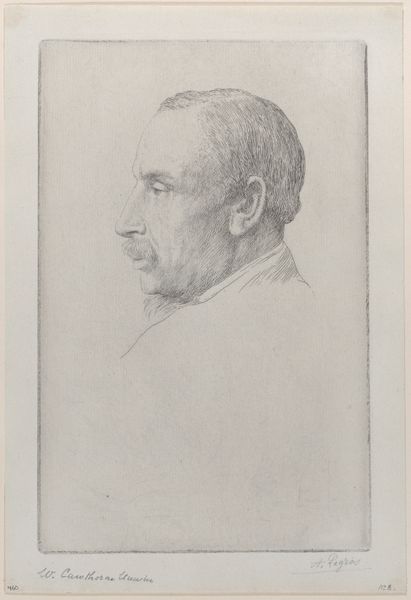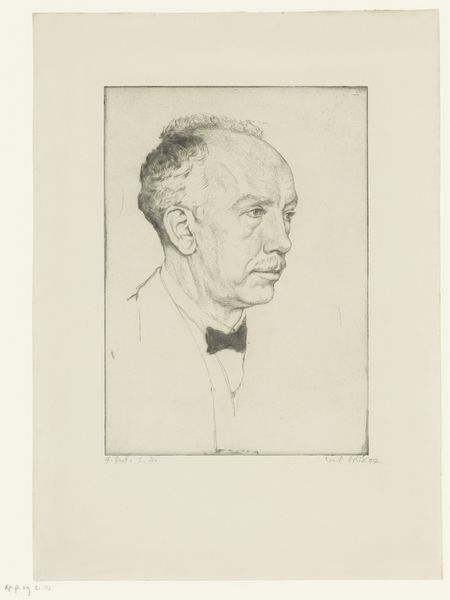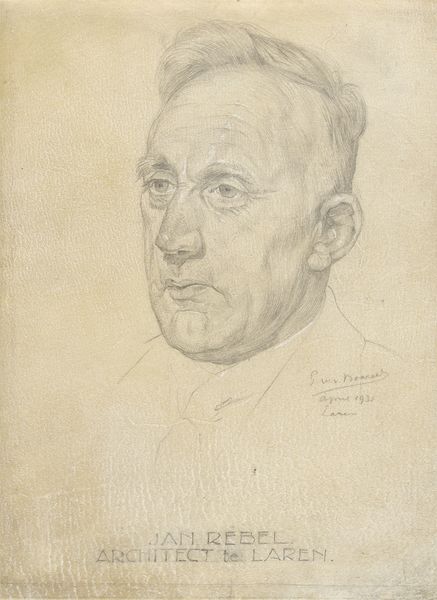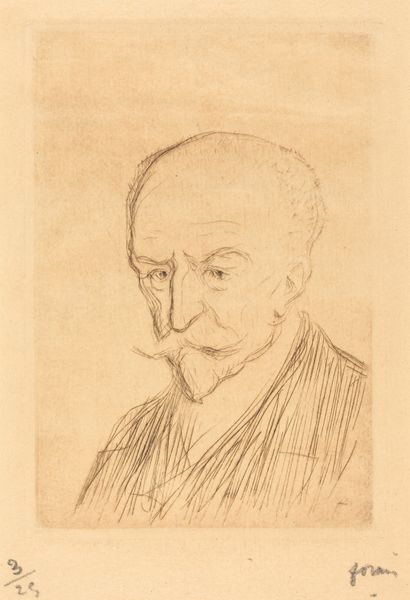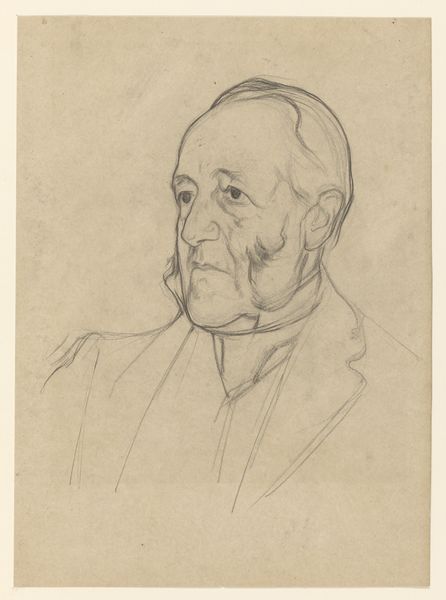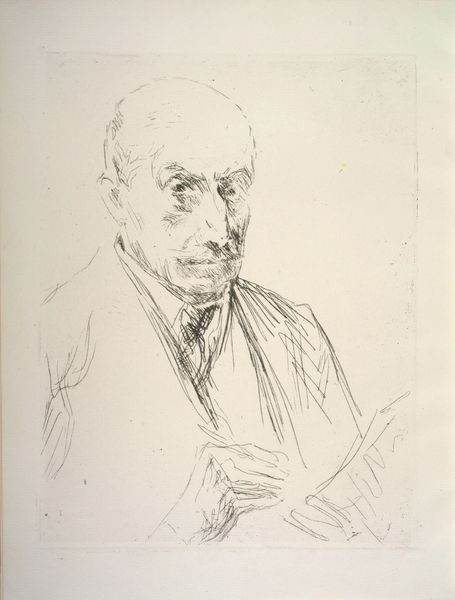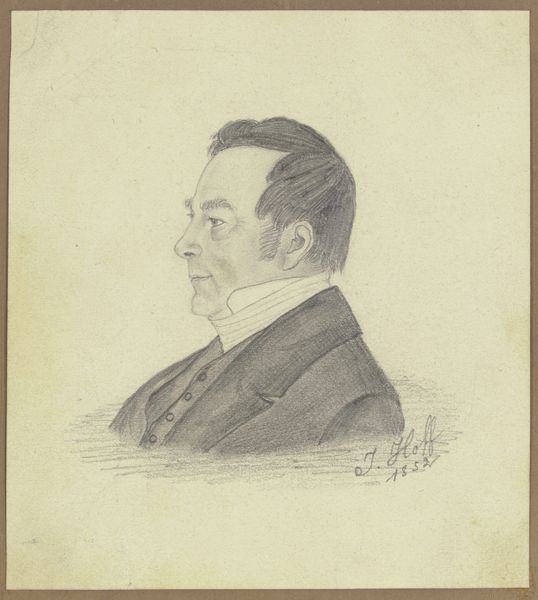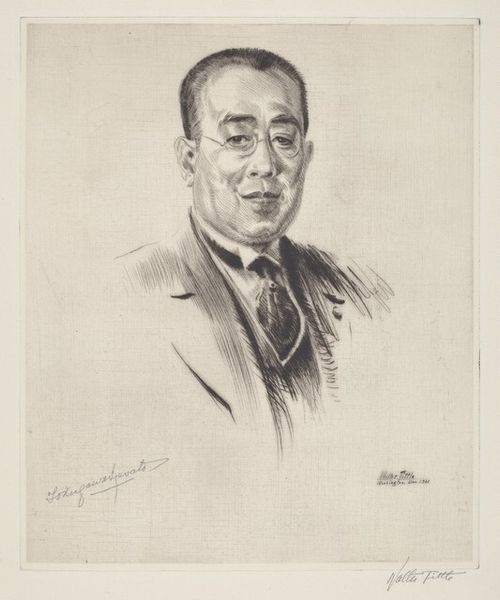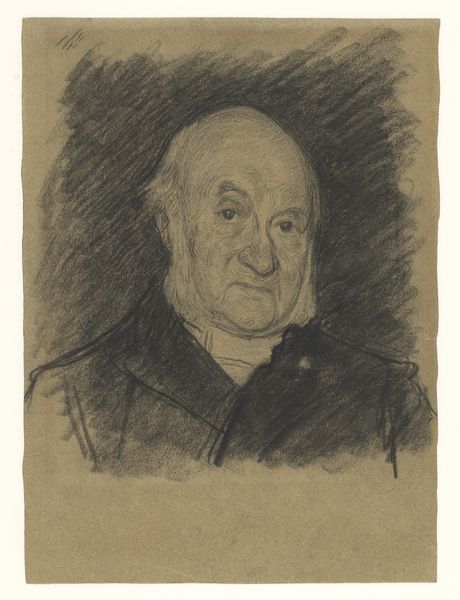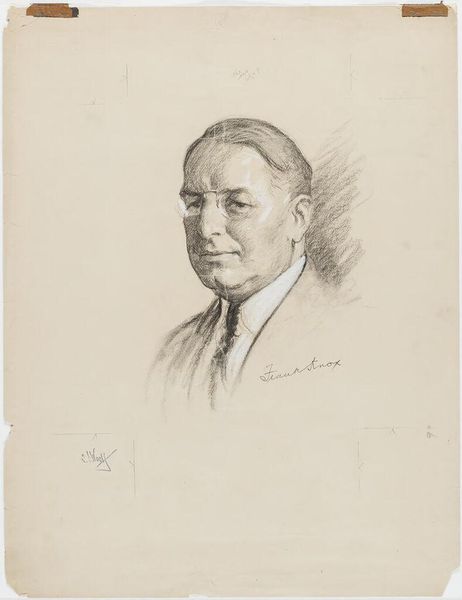
drawing, pencil
#
portrait
#
pencil drawn
#
drawing
#
pencil sketch
#
pencil drawing
#
pencil
#
portrait drawing
#
academic-art
#
modernism
#
realism
Dimensions: height 413 mm, width 292 mm
Copyright: Rijks Museum: Open Domain
Editor: Here we have "Portrait of a Man" from around 1830 to 1905 by Jan Cornelis van Rossum. It's a pencil drawing at the Rijksmuseum. I find his gaze really captivating. What stands out to you? Curator: This portrait encapsulates the rise of modernism within the context of Dutch Realism. The stark presentation is striking, pushing back against romantic idealization. Instead, we have an unvarnished look at an individual. What kind of public was the artist engaging with? What statements do you think van Rossum wanted to convey about identity during a period of immense social change? Editor: Hmm, it's interesting that you bring up the public. It makes me think about the accessibility of art at this time and who had access to such works. Curator: Precisely! Were portraits like this common among different classes, or were they still mainly for the elite? Consider how photographic portraiture began challenging painting, democratizing the representation of self. How did artists respond, both institutionally and aesthetically? Editor: That tension between painting and photography, that makes sense. The rawness of this portrait seems almost like a defiant response. It lacks the posed perfection a photograph could capture, opting for something more human. Curator: Exactly! It is in dialogue with photography. Perhaps he seeks authenticity beyond mere representation. The museum itself is a societal institution that impacts how this work has been preserved and interpreted. If it had not entered the public collection, what possibilities could have played out? Editor: I see how the social context profoundly shapes art itself, and even how we encounter it today in a museum setting. Curator: Precisely. The portrait becomes not just an image of a man, but a lens through which we can observe the forces shaping artistic expression. Editor: This really gives me a lot to think about when viewing art, not just the aesthetic elements but also the wider social context in which it was created and how we access it today.
Comments
No comments
Be the first to comment and join the conversation on the ultimate creative platform.

